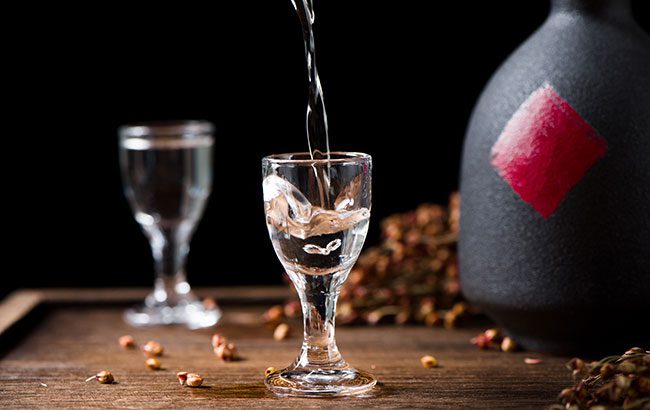Cognac and baijiu drag APAC spirits down
By Nicola CarruthersSpirits volumes in Asia Pacific fell by 2% last year, driven by declines for Cognac, Scotch and baijiu in China.

According to data from IWSR on the Asia Pacific region, total beverage alcohol (TBA) volumes fell by 2% last year, with value down by 3%.
All major categories were in decline, except for the ready-to-drink (RTD) sector, which rose by 1% last year.
Spirits (including national spirits such as Chinese baijiu) saw a smaller decrease than wine, which dropped by 4%, and beer (down 2%).
IWSR noted a mixed performance across the region with China down by 5% in TBA volumes and India up by 6%.
The Philippines, Thailand and Vietnam all recorded TBA volume growth of 2%, but there were declines in Japan (down 1%), South Korea (down 1%) and Australia (down 3%).
“With inflation stabilising and GDP expanding, India and the Philippines are leveraging demographic momentum to fuel TBA growth,” said Emily Neill, IWSR’s chief operating officer research and operations.
“Meanwhile, Japan and Thailand inch forward, and China continues to underperform, with the real estate crisis and weaker economic outlook significantly reducing the scope for TBA growth.
“While premiumisation is softening globally, Southeast Asia still offers room to grow value, supported by tourism, cocktail culture and rising affluence. In this slower growth, value-led environment, staying invested in Asia’s beverage alcohol markets is vital. The region is evolving, with new opportunities emerging.”
Across the region, IWSR noted that emerging spirits categories are growing at the expense of traditional segments, such as Cognac and Scotch.
In 2024, Irish whiskey volumes soared by 27%, Tequila rose by 14%, gin increased by 11% and spirit-based apéritifs grew by 24%.
Gin’s global growth was concentrated in emerging markets last year, with Asia led by the Philippines, China and India.
Cognac’s regional volumes plunged by 11% in 2024 (and value slumped by 16%) and Scotch volumes were flat.
Opportunity for baijiu to go global
China’s decrease in 2024 was driven by volume drops for baijiu (down 5%), Cognac (down 14%) and Scotch whisky (down 8%).
IWSR noted that these categories were affected by the ‘decline in formal consumption occasions’.
In contrast, gin volumes soared by 20% in 2024, while vodka was up by 4%. The two segments benefitted from the rising influence of cocktails, with standard-level products driving growth.
“China’s premium slowdown appears chiefly cyclical, due to economic pressures as consumers reprioritise value, casual occasions and relevance over prestige,” explained Shirley Zhu, research director – Greater China.
“In a tougher, increasingly value-driven market, brands must recalibrate and lean into affordability, emerging categories and new occasions, as premiumisation stalls and traditional on-trade channels falter.
“However, despite demographic shifts, China remains a huge consumption market, and also has opportunities for global exports of baijiu.”
Baijiu is facing several headwinds but the ultra-premium-and-above segment is seeing growth.
IWSR expects spirits in China to decline at a compound annual growth rate of 1% over the next 10 years, but excluding baijiu, spirits volumes are set for a 2% rise.
RTDs are also forecast for a 2% CAGR 10-year increase in China.
On the other hand, beer and wine are both expected to be flat (CAGR 2024-2034), while sparkling wine is forecast to post a 5% increase.
Irish whiskey soars in India
IWSR noted that India’s spirits increase has been broad-based, with consumers moving beyond the core whisky and experimenting in other categories.
IWSR pointed to the huge growth seen in categories such as Irish whiskey, which posted a volume increase of 58% in 2024, and vodka, which rose by 17%.
Scotch and gin are expected to benefit from the recent agreed free trade agreement between the UK and India, which will see import tariffs halved from 150% to 75%, then reduced to 40% within 10 years.
According to IWSR data, 86% of India’s imported whisky value growth came from Scotch in 2024, and 76% of imported gin value growth came from UK gin.
IWSR predicts Scotch volumes will grow at a CAGR of 7% between 2024 and 2029, with gin volumes set to rise at a CAGR of 3% over the same timescale.
“The consumer appetite for Scotch in particular is set to drive growth for status spirits in India, and reduced tariffs are key to unlocking the market’s potential,” noted Jason Holway, IWSR’s senior consultant India.
“Confidence levels among upper-middle-class urban Indians remain high, thanks to growing disposable incomes. There is some evidence of a moderation trend emerging, but the net effect is small at present, with the rising number of new consumers entering the market.”
IWSR also expects RTDs to offer the largest growth in the Asia Pacific region in the coming year.
In 2024, the category’s growth was led by Japan and South Korea.
Japan will also key to the category’s strong growth momentum over the next five years, thanks to the size of the market and a predicted CAGR increase of 3% between 2024 and 2029.
China is forecast to post a CAGR rise of 2% for RTDs over the same period, while South Korea could grow by 10%.
Despite being an early category driver, Australia is not expected to add significant volumes to RTDs in the years ahead, IWSR said.
Globally, total TBA volumes fell by 1% last year, but spirits outperformed beer and wine, according to IWSR.
Related news
